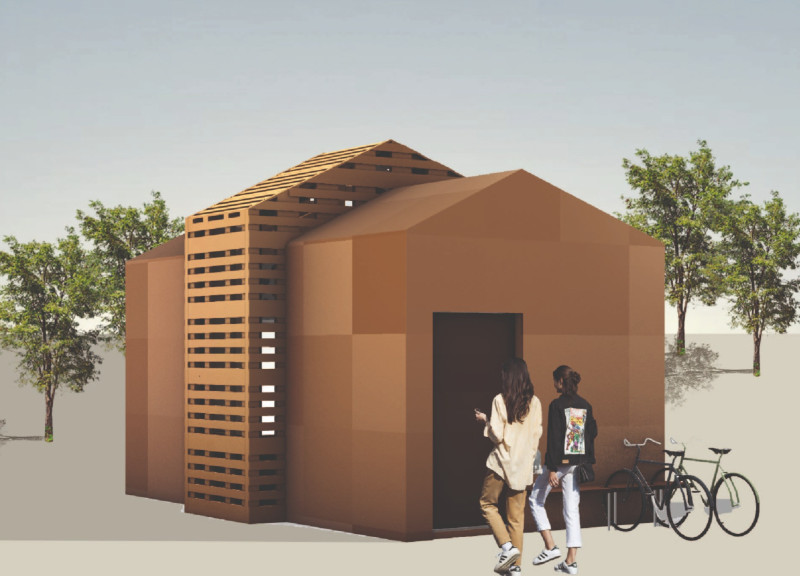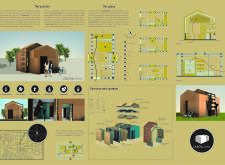5 key facts about this project
The project employs a modular design approach, enabling flexibility in room configuration and spatial usage. Each unit consists of private areas including bedrooms and bathrooms, along with multifunctional public spaces designed for communal activities such as dining, socializing, and working. This layout encourages a sense of community while allowing individuals to have their own retreat when needed. The incorporation of shared amenities promotes resource efficiency, sustainability, and social engagement among residents.
Sustainable Design Principles and Material Choices
One of the distinct aspects of UNION Housing is its commitment to sustainability. The project utilizes a carefully selected array of materials, such as plywood, structural insulation panels, and recycled steel. These selections ensure durability while also promoting environmental responsibility. The structure includes elements to harness solar energy and establish water collection systems, showcasing a comprehensive approach to ecological design.
The integration of microfarming spaces into the project embodies the idea of community self-sufficiency. Residents can engage in small-scale gardening, which supports local food production and encourages a connection with nature within an urban setting. Such elements enhance the project's adaptability, allowing it to respond to the evolving needs of its inhabitants.
Community-Centric Design Elements
The design features communal areas that encourage interaction, such as shared courtyards and communal gardens. These spaces are meticulously planned to facilitate social gatherings and promote cooperative living, differing significantly from traditional housing projects that prioritize privacy over community. By encouraging collective activities, UNION Housing fosters a supportive residential atmosphere.
Additionally, the project's architectural design includes considerations for energy efficiency and versatility. The layout allows for the easy transformation of spaces according to occupants' activities throughout the day, making it suitable for both work and leisure. This functional adaptability is crucial in urban settings where space is limited and requires a strategic approach to fulfill various resident needs.
The architectural plans for UNION Housing reflect a thorough understanding of contemporary living challenges, emphasizing a design philosophy that prioritizes sustainability, adaptability, and community engagement. For further insights, interested readers are encouraged to explore the architectural designs, plans, and sections related to this project, as they provide a comprehensive view of its unique features and functional capabilities.























